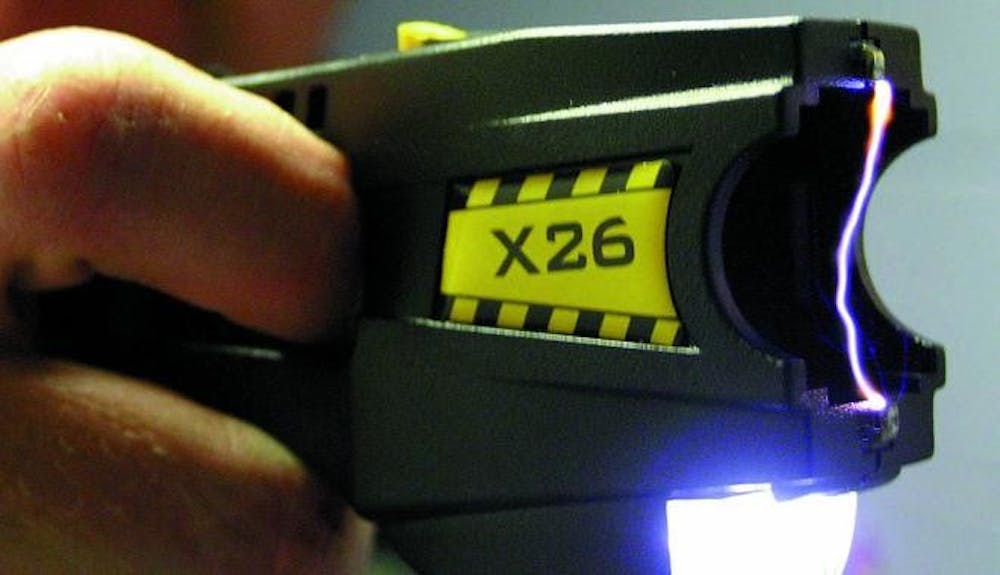Let’s say you’ve just been Tasered and arrested by a police officer. As you lay there, dazed and in shock, the officer handcuffs you and reads you your Miranda rights. He asks you if you understand them, and you likely nod or reply a shaky “yes.” You can now be interrogated, and your words can be used against you.
However, in this scenario, you were just hit by around 50,000 volts of electricity that coursed through the very same brain structures responsible for logical thinking and memory. Do you actually understand what you did, or heard, if you were just Tasered?
Until a 2014 study funded by the National Institute of Justice, there had not been any studies on the cognitive effects of Tasers and other such “conducted energy devices” (CEDs). Despite this, many acknowledge the importance of knowing whether a person can coherently and willingly waive their rights and control what they say during a police investigation, especially when their statements are subsequently used in court.
Past research already showed that electrical injuries, like getting struck by lightning or shocked by wires, causes cognitive problems across the board and may even be associated with personality and mental disorders, like depression. Of course, a lightning strike and wire shock can produce up to 500 million joules of electricity, while a Taser produces a measly 0.08 joules in comparison.
In previous studies, Tasers have been shown to be safe for humans, without any long-term physical effects, and so they have become the most popular non-lethal choice for law enforcement. TASER International, the company that makes Tasers, estimated in 2013 that its device has been used in the field over 1.99 million times. However, the growing popularity of Tasers among police officers has led to more research, specifically into the effects of the shocks on the brain.
The 2014 report was a pilot study conducted by Michael D. White and his colleagues at Arizona State University, along with Robert J. Kane of Drexel University, on 21 police recruits at the San Bernardino County Training Center in California. These recruits were trained with routine Taser exposure training and went through a battery of cognitive tests three to four hours before their exposure to training, five minutes after their exposure, and 24 hours post-exposure.
Despite the small, unrepresentative sample size, this initial testing confirmed the importance of this type of inquiry. In several measures of cognition, there were statistically significant reductions in cognitive function, and this function returned to baseline within 24 hours. This led to further studies regarding the effects of exposure to Tasers.
White and Kane, along with their teams, re-did the study in 2015. In this later study, they administered the same tests to 142 college students at Arizona State University. These volunteers were placed in four groups, two of which were Tasered. One Tasered group and one control group mimicked the physical exertion of a resisting suspect by striking a punching bag for 30 seconds before the experiment. All of this was done in carefully controlled conditions in a hospital for the safety of the volunteers, which may differ from real-world conditions.
The researchers administered a series of written tests in order to gauge brain functions like auditory recall, along with subjective questions to identify emotion and attention. They were administered at various times: an hour before the trial, right after the trial, an hour after the trial, a day later and a week later. The results showed deficits in the Hopkins Verbal Learning Test (HVLT), a measure of verbal learning and memory, that lasted for less than one hour.
The results of these two studies show that police policy may have to be adjusted before a suspect in custody can be asked to waive his or her rights and be interrogated. From White and Kane’s study, it appears that waiting just one extra hour after exposure to a Taser can the trick.
Of course, many questions remain. The subjects used in these studies were generally healthy and young subjects, specifically screened to be able to withstand the shock of a Taser. How much longer would these deficits last on a person of poor health, a person with substance abuse problems or a person with a lower ability to communicate verbally?
Already there have been several court cases, such as United States v. Mack, in which the defendants have tried to overturn admitted evidence by claiming mental impairment due to Tasering. More investigations can shed more light on how these new police technologies affect our ability to be cognizant of our legal protections.





